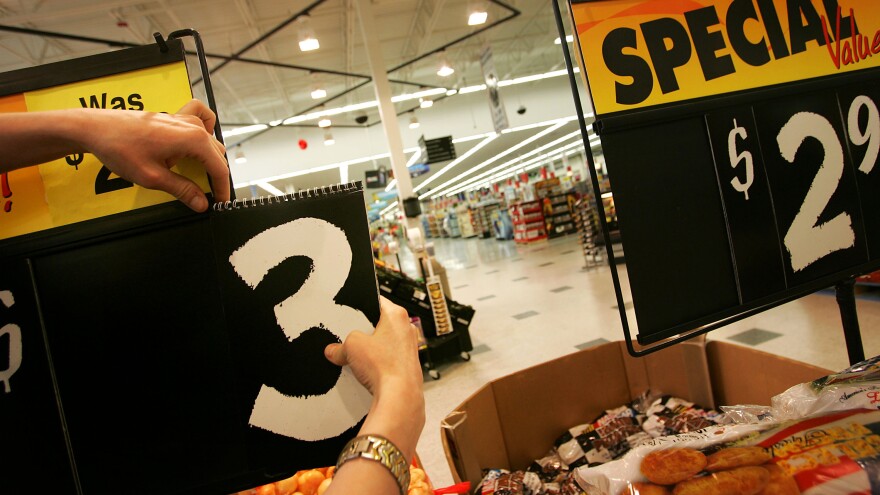The falling price of gasoline and eggs took some of the sting out of inflation last month. But the overall cost of living is still climbing uncomfortably fast.
Consumer prices in May were up 4% from a year ago, according to a report from the Labor Department Tuesday. That was the smallest annual increase since March of 2021.
Loading...
Prices rose 0.1% between April and May, a smaller increase than the month before. Rising rents and used car prices were partially offset by cheaper gasoline and electricity.
Excluding volatile food and energy prices, "core" inflation was 5.3% for the 12 months ending in May. Annual inflation has dropped significantly since last summer, when it hit a four-decade high of 9.1%. But while the price of many goods has leveled off or even fallen, the cost of services such as restaurant meals and car repair continues to climb.
"Leisure and hospitality, cost of travel, that's remained concerningly sticky," said Andrew Patterson, a senior economist at Vanguard.
The latest inflation news comes as the Federal Reserve begins a two-day policy meeting. The central bank has already raised interest rates 10 times in the last 15 months in an effort to tamp down demand and bring prices under control.
Investors are betting that the Fed will leave interest rates unchanged at this week's meeting. But additional rate hikes could follow if inflation remains stubbornly high.
"We believe the Fed has more work to do," Patterson said. "Five percent inflation is better than 9%, but it's still a long ways away from their 2% target."
The challenge for consumers — and the central bank — is that inflation has been a moving target. Just as one source of pocketbook pain is resolved, another pops up to take its place.
Loading...
Energy prices that spiked after Russia's invasion of Ukraine have come back to earth. Egg prices have fallen too, as flocks of laying hens rebound from a severe outbreak of avian flu.
"Supply chains have normalized," says White House economist Ernie Tedeschi. "And that seems to have translated into goods inflation that has trended down."
But as Tedeschi and his colleagues acknowledged in a recent blog post, inflation around the price of services "has remained elevated in recent months and is unlikely to be resolved by lessening supply chain frictions alone."
The Fed's aggressive rate hikes have put the brakes on some of the most sensitive parts of the economy, such as the housing market and manufacturing. But other industries continue to grow, and robust consumer demand is keeping upward pressure on prices.
Even if Fed policymakers don't raise interest rates this week, they could signal their intent to do so, by forecasting higher rates later this year. Federal Reserve Chair Jerome Powell could also stress during his post-meeting news conference that rates will remain elevated until inflation is under control.
"I think they have an opportunity here for a hawkish pause or skip or whatever you want to call it," Patterson said. "And I believe Chair Powell is going to emphasize just how long they're going to remain at whatever level it is that they get to, given the need to get inflation back down."
A survey by the Federal Reserve Bank of New York suggests Americans have come to view inflation as a less acute but more stubborn problem than they once did. People's guess at what inflation would be a year from now was the lowest since May of 2021, when rising prices were just beginning to take hold in the U.S. But people's longer-term forecasts were somewhat gloomier than they had been, and on average they don't expect inflation to return to the Fed's 2% target anytime in the next five years.
Copyright 2023 NPR. To see more, visit https://www.npr.org.



